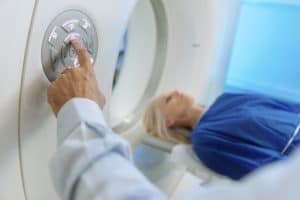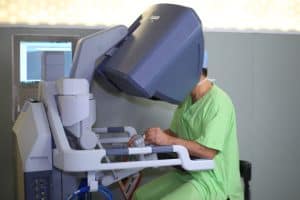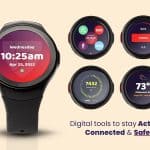
Thanks to new research, medical devices are able to detect even smaller abnormalities, like tumors, during routine scans.
The marketplace has transformed over the past few years, adjusting and adapting to life during a global pandemic. For those in the healthcare industry, businesses have had to find new ways to reach and serve patients as well. As we look forward, what can we expect from the medical device industry as it aims to support both healthcare organizations and individuals living at home? Here are a few things to anticipate for the next twelve months.
Supply Chain Challenges
If you’re already feeling tired of hearing and learning about the global supply chain, you won’t get any relief in the new year. In fact, it seems like we will be living with the shipping backlogs for the next few years and it appears that no product is safe from delays. This means that medical device components will likely be delayed due to supply chain issues that will continue throughout 2022.
What does this mean for manufacturers and consumers? For medical device manufacturers, innovation and creativity will be key as they work to create proactive supply chain solutions that can ensure they have the raw materials to make their products as quickly as possible. For consumers, they may find that devices cost a bit more or that they will need to wait longer in order to get the device they prefer.
The Return of Elective Medical Procedures
During most of 2020, people were choosing to skip scheduling elective medical procedures due to the restrictions and uncertainty caused by the pandemic. In general, the healthcare industry saw some residual reluctance for elective procedures continue throughout the beginning of 2021 as well. However, people are now more confident and finally ready to schedule the procedures they have been putting off for years.
Thanks to the return of elective medical procedures, the medical device industry is anticipating an increase in need as patients return home for a safe discharge. For older adults who are returning home after a hip or knee replacement, for example, a safe discharge plan will likely include some type of medical alert device so that they are able to connect with help should they need it during recovery. For others, medical devices might be a part of a physician monitoring plan after their procedure or in the days leading up to it. In any case, medical device manufacturers are forecasting a greater demand due to the resurgence of these elective procedures.
A Focus on Cybersecurity
Leveraging technology in order to increase communication has been a hallmark of the medical device industry for years. However, as technology capabilities have increased, so has the risk of cyberterrorism and hackers. As the industry looks to 2022, cybersecurity measures are a new focus.
Medical devices need to meet HIPPA requirements if they are communicating personal information to multiple parties, but security measures can’t stop there. Currently, the FDA is holding medical device manufacturers accountable for any issues that arise related to security. This means that medical device manufacturers have the potential to incur large fines or other consequences if they aren’t doing their best to manage security risks.
A Rise in Wearable Devices
Medical devices have come a long way in the past decade, and it looks like consumers want even more from the wearable options that are currently available. Look for devices to increase their capabilities for monitoring falls, heart rate, and sleep habits in addition to adding features that give the user (as well as their physician) access to blood pressure and oxygen saturation levels.
Watch for companies to continue to leverage technology to make wearable devices ranging from watches to rings that promote well-being and empower users to take control of their habits. Read our Medical Guardian reviews for more product information.
More Point-of-Care Diagnostic Devices
Diagnosing patients quickly and accurately has come to the healthcare forefront thanks to COVID-19. While the medical device industry was already testing the waters in the diagnostic department, the push to get point-of-care devices to the mainstream market has accelerated.
Look for medical device companies to continue to develop point-of-care diagnostic devices as well as to enhance the ones they currently have on the market.
A Rise in Need for Minimally Invasive Devices
The desire for minimally invasive procedures from both patients and medical professionals means the medical device industry needs to keep up with the demand. While the tools for minimally invasive surgeries and other procedures have increased over the past decade, there is still plenty of room for improvement.
In the coming year or two, watch for medical device companies to improve current devices that are used during procedures as well as for monitoring after the procedure has been completed.
Increased Use and Exploration of Artificial Intelligence and Virtual Reality

Medical students, as well as veteran professionals, are able to use medical devices to brush up on new skills or troubleshoot potential challenges.
It can seem like a sci-fi television show or movie, but the fact is that artificial intelligence (AI) and virtual reality are now a part of regular healthcare training and interventions. Currently, virtual reality is used often in training during medical school and to help surgeons brush up on their techniques or strategies when things do not go as planned. But beyond the operating room, virtual reality is also used to build empathy and understanding in bedside caregivers and with patients who are living with depression, autism, or low vision. Companies will surely continue to explore more virtual reality opportunities in the coming year.
As for artificial intelligence, companies are expected to see a market size growth from $10 billion in 2021 to more than $120 billion by the year 2028. Watch for companies to continue to perfect artificial intelligence programming to assist during complex surgeries and effectively diagnose certain conditions or diseases.
More Medical Robots
Speaking of artificial intelligence, look for medical robots to continue to be a presence in operating rooms and classrooms throughout the world. Currently, the da Vinci Surgical System is a regular collaborator in operating rooms staffed with medical professionals and students. However, the industry is looking to find safe ways to move robots from collaborators to more active roles in performing procedures ranging from radiation therapy to small surgeries.
More Security and Innovation Surrounding Internet of Medical Things
Internet of Medical Things (IoMT) is a term used to describe all the apps, programs, and devices that connect to one another in a healthcare setting. It’s how computers communicate with one another to share medical information about patients. While having notes and results completely computerized allows for medical teams to all stay on the same page regarding the care for a particular patient, it also opens up the door for security issues.
In the new year, watch for companies to continue to focus on cybersecurity measures as well as develop new ways for devices and apps to communicate even more quickly.
Increased Use of 3D Printing
When 3D printing came on the scene less than 10 years ago, medical device companies watched the technology carefully to see how they could use it in the healthcare world. Today, researchers and scientists are actively exploring how 3D printing could be used to replicate human joints, organs, and prosthetics that can be completely customized to the needs of individual patients.
While research is still ongoing, the innovation here is something to keep your eyes peeled for in 2022 and beyond.
Personalized Care Through Genomic Medicine
Person-centered care is a trend throughout all levels of healthcare, but perhaps customized care is about to get even better thanks to genomic medicine. Using genomic data for each patient, medical professionals are able to develop plans of care that take every aspect of the patient’s health and history into account. While genomic medicine is already a part of oncology and pharmacology pursuits, it is spreading into other specialties in order to give patients the best chance at diagnosis and treatment.
Even Better Computer Vision
Medical devices such as MRI machines are able to see and interpret images that can give medical professionals critical information they will use to create the patient’s care plan. In the new year, medical device companies are looking to enhance the vision of computers so professionals are able to find tumors and other abnormalities when they are even smaller than before. Early diagnosis can lead to early treatment, which will increase the success rate.
Using 5G Technology
Medical device companies are actively looking at new ways to harness 5G, or fifth-generation wireless technology to increase the speed of communication from computer to computer or device to person. Quicker transmission rates mean faster treatment, especially when large files or scans need to be sent from one doctor to another.
What All This Means for You
No matter if you are an investor, a medical professional, or a patient, medical devices are a part of your life. Knowing what is coming next in the industry is exciting as well as empowering. New research and innovative technology can lead to better treatment outcomes, earlier diagnosis, and even the ability to prevent medical crises before they occur.
The future is certainly bright!


